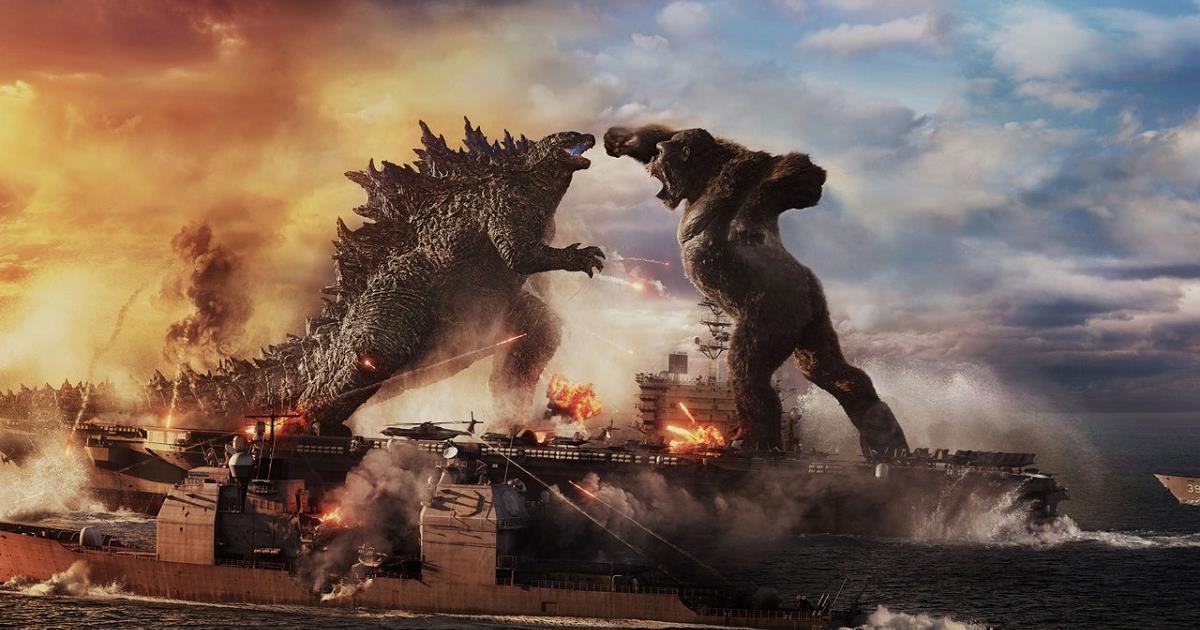
During the pandemic, pop culture moved decisively online. As movie theaters and live events resume operation here are five ways the entertainment industry has changed, according to Lucas Shaw at Bloomberg.
The Best Seat in Your House
The long-standing three-month window of exclusivity for theater release has been smashed. Universal has cut deals with cinema chains for a 17-day release window. Paramount Pictures says it will shrink this to as few as 30 days. From 2022, all Warner Bros. movies will land at HBO Max 45 days after they leave theaters.

The numbers suggest the strategy works. Godzilla vs. Kong has grossed over $425 million at the worldwide box office since release in March, making it the biggest English-language movie since the pandemic began. But WarnerMedia simultaneously released it on HBO Max, instantly becoming the streamer’s most popular title.
“The movie business I grew up in is effectively over. And I’m not sure that’s a bad thing.”
— Alex Kurtzman
In the past, theater chains would have blocked such efforts, but once the pandemic began, their leverage was gone. “The movie business I grew up in is effectively over,” says Alex Kurtzman, a veteran writer and producer whose writing credits include Star Trek Into Darkness. “And I’m not sure that’s a bad thing.”
The big question is what will Amazon’s strategy be in September when No Time To Die gets its much delayed premiere. Having bought the rights to Bond (shared with Eon Productions) as part of the $8.5 billion deal for MGM, Amazon’s treatment of 007 could be the acid test for the future of theatrical.
China and South East Asia Dominate Marketing Strategies
Last year, China overtook North America for the first time to become the world’s largest movie market with $3 billion spent on tickets versus $2 billion. Chalk it up to the pandemic at your peril.
“There are many reasons to believe the U.S. won’t ever reclaim its primacy,” says writer Lucas Shaw. “China has built more than 20,000 screens in the past three years alone, bringing its total to 75,000, almost double the number in the U.S. and Canada. And the U.S. and Canadian figure is declining.”

Fast and Furious 9 earned $162 million internationally over its opening weekend, with $135 million of that coming from China. It’s the first Hollywood movie since 2019’s Avengers: Endgame to crack $100 million in its opening weekend in China. The movie, doesn’t open in the US until June 25.
That bodes well for studios who will increasingly rely on the Chinese box office. But local Chinese movies do well too, accounting for 85% of China’s box office in 2020, up from 60% in 2018, according to Comscore.
“Even with the possible end of the pandemic in sight, Netflix, Amazon, and Hulu are all looking for more big, broad comedies and other escapist programming for the years ahead. Because when people return to the outside world, they’ll be looking for anything but a return to darkness.”
— Lucas Shaw, Bloomberg
The top 10 grossing movies in China from April 1, 2020 to March 29, 2021 were all locally produced and included the breakout hit The Eight Hundred which became the first title outside the Hollywood system to top the global box office, amassing over $450m in 2020.
The globalization of the movie business is a sign of what’s to come for TV as well. Non-US markets account for more than 60% of Netflix subscribers.
READ MORE: ‘Fast and Furious 9’ is soaring at the box office in China and easing fears about the future of Hollywood blockbusters in the crucial market (Business Insider)
“It will be only another year or two before African, European, and Middle Eastern customers outnumber those in the U.S. and Canada,” suggests Shaw. “HBO Max, and Amazon are expanding their international streaming operations. India already accounts for a third of Disney+ subscribers. Disney is hoping to use its formula in India — a mix of sports, original series, and low prices — to expand its reach across South Asia.”
Can’t Get Enough Sitcoms
Despite so-so reviews for the Friends reunion, the show betrayed our nostalgia and hunger for simple escapism. The US version of The Office was the number one global streaming hit of last year. Other streaming hits include Apple+ series Ted Lasso, and the final season of lauded Canadian comedy Schitt’s Creek.

Yet with most streamers concentrating on prestige drama, the lack of new sitcoms has pushed people deep into streaming-service libraries. According to Shaw, viewing of old comedies like Friends, The Bernie Mac Show and Roseanne soared. In 2020, Americans spent more than 11 billion minutes watching Family Matters, the 1990s sitcom about a middle-class Black family in Chicago.
“If you stop paying for cable but sign up for all the major streaming services out there, you’ll probably end up spending about the same amount.”
— Lucas Shaw, Bloomberg
Cue commissions for two more seasons of Ted Lasso, with reboots of Saved by the Bell, Punky Brewster and Gossip Girl in the works.
“Even with the possible end of the pandemic in sight, Netflix, Amazon, and Hulu are all looking for more big, broad comedies and other escapist programming for the years ahead,” says Shaw. “Because when people return to the outside world, they’ll be looking for anything but a return to darkness.”
Major Leagues Head to Streaming
Fans seemed grateful for any live sport they could get while the pandemic closed down all events. Even now, spectators are being allowed to return to game in only limited numbers.
Yet viewing figures sunk.
The World Series was the least-watched on record. Ratings for the NBA Finals dropped 51% from the year before. The Super Bowl was the least-watched since 2007.
“The average cost of production has grown at least 20%, most producers agree, and it may never go back down. Media companies already tried to recoup those costs by firing thousands of employees last year. Raising prices will be next.”
— Lucas Shaw, Bloomberg
It’s no longer sufficient to blame Covid. Federations and rights holders need to up their game to streaming. Comcast is shutting the NBC Sports Network and shifting many of its golf tournaments and NASCAR races to Peacock. Its Olympics coverage targets younger viewers on Twitch with an array of bespoke and interactive content.

Disney will stream 75 NHL games on ESPN+ and Hulu. NFL matches will be streamed on Amazon and the streaming services of Disney, Fox Sports, and ViacomCBS in addition to airing them on cable.
“Now that sports are moving out of the bundle and into streaming, you really have a recipe of the destruction for the legacy multichannel bundle,” Rich Greenfield, an analyst with LightShed Partners, tells Bloomberg.
READ MORE: Here Are the Ways the Pandemic Changed Hollywood (Bloomberg)
Ditch the Old Bundle for a New Bundle
The reason that studios and traditional sportscasters are moving online at a faster pace than before is economics. We’re all willing to pay for it.
“If you stop paying for cable but sign up for all the major streaming services out there, you’ll probably end up spending about the same amount,” Shaw says.

The pandemic has also increased the cost of making movies and TV shows, because productions must hire health and safety personnel and film for fewer hours per day, thereby prolonging shoots.
“The average cost of production has grown at least 20%, most producers agree, and it may never go back down. Media companies already tried to recoup those costs by firing thousands of employees last year. Raising prices will be next.”
The media industry has fragmented and is now re-aggregating online. Breaking out of that loop is the trick.





Discussion
Responses (1)